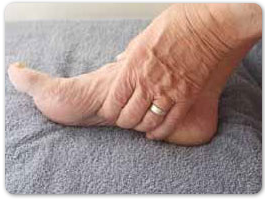
You that exercise is good for you—even though you have diabetes—but why does everyone seem to be so concerned with how it affects your feet?
Exercise may indeed benefit you, although you must consult your physician to discuss your proposed exercise plan before beginning. It can help your muscles and cardiovascular system stay fit enough so you can continue to perform all activities of daily living. If you have type 2 diabetes, exercise can improve your blood sugar levels and help your own insulin work better, possibly eliminating or reducing the need for medication.
However, the feet are a special area of concern for anyone with diabetes. A common complication of diabetes is nerve damage in the extremities. If you have reduced sensation in your feet, you are less likely to feel pain, and you will not know without visual inspection whether there are any injuries or breaks in the skin. Therefore, you must be vigilant about checking your feet, regularly and especially after exercise. If you cannot see all areas easily, enlist another person or use a mirror to help.
The problem with diabetes and the feet is multilayered: Not only is it possible for a blister, cut or other sore to be present without your feeling it but any slight opening in the skin can progress to an infected state more quickly than in a person without diabetes. This is because another typical complication of diabetes is reduced blood circulation, which can hasten the development of an infection.
For this reason, you must consult a physician immediately if you see redness, swelling, a blister, cut or any other skin issue on your foot. A blister, for instance, can progress to a signi cant infection in only a few days, with potentially serious consequences if you fail to report it.
In conjunction with your physician, we can design an individualized exercise program for you that will help you maintain physical fitness and avoid the challenges that diabetes can present.
